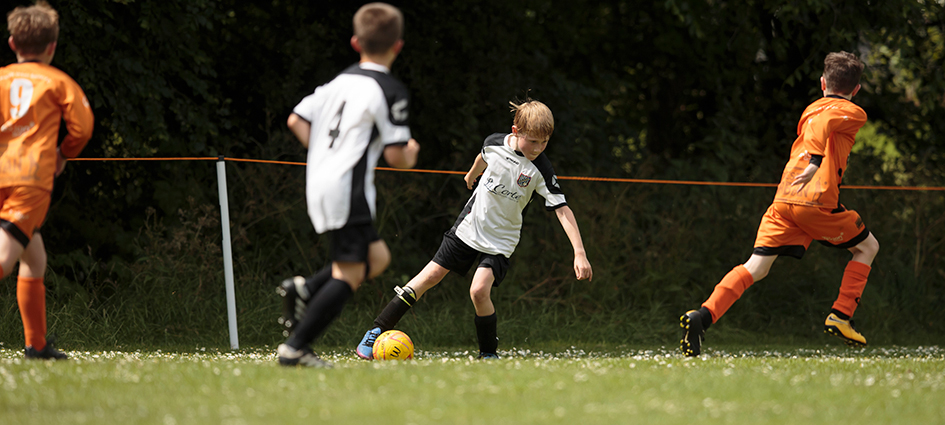Guides

Instinctive decision-making
- The Boot Room
- 09 January 2020
Help your players improve their decision-making skills so they adapt to game situations by understanding their instinctive reactions and embedding the England DNA principles.
The modern game has many examples of teams using the counter-attack to devastating effect. In the Foundation Phase, transition also plays a prominent role but for slightly different reasons. During the games that your young players play (particularly in the U5-8 age group) there’ll be lots of transitions with the ball being lost, won, then more than likely given away again. It’s a natural feature of the game when young children play due to their developing capabilities in all four corners.
With the other areas of the England DNA in mind, if you improve your player’s ability to master the ball or combine with their teammates, then you may reduce the number of times possession is surrendered. If you encourage your players to travel quickly with the ball and to run into supporting positions if they don’t have the ball, then transitions can suddenly become a productive feature of the Foundation game.
For your youngest players it’s important that this development is started as it can be built upon and continued in the second part of the Foundation Phase.
Children will make instinctive decisions but they won’t be refined or based on the amount of experience older players have. If a player’s first reaction is to get rid of the ball, then work with them to stay on it and try to do something a little more productive. This could take a while, but these are long-term messages so be patient with them.
If you’ve embedded the England DNA principles at the start of the Foundation Phase, you should notice that the older players in your group have a growing confidence on the ball, are less phased by pressure and have added some turns, tricks and feigns to their skillset, which allows them to influence the game in a very positive way.
Building an individual’s confidence in their own ability when in possession is probably one of the most important things a coach can do, as it can help to create a player who’s cool, calm and calculating whenever they’re on the ball. If players are fearful of possession, every mistake will feel magnified and their first reaction will be to get rid of the ball.
If transitions are going to occur frequently then give your players the skills and abilities to help them to be effective in these situations. Help them react positively to a change in possession (either way) where they quickly go into attacking or defending mode. This can be made exciting through the practices you employ and the simple, clear and consistent messages you give out.
For the older players in your Foundation Phase group (9-12) their understanding will be increasing and their reaction times to events that happen in the game will be getting shorter. They’ll be developing the ability to recognise patterns and events (sometimes just before they occur). This means that the amount of interceptions might be increasing as well as the opportunities to counter-attack. Look out for this change, but also plan for it during training by including lots of breakout games and activities that require anticipation, speed and quick decisions against the clock.
To help develop your player’s decision-making skills:
- try to understand the instinctive reactions they’ll make and then, if needed, help them introduce other ways to react
- help them recognise when they can be part of a transition (attacking or defending)
- realise that the decision-making of young players is slower so be tolerant of the player who stops and watches - this is where they’re currently at, help them see how they can get involved in the action again
- prioritise recovering or attacking quickly (with and without the ball) in the many small-sided games you will play
- include lots of breakout games, particularly for the older players, to score into a goal (preferred) or dribble/travel into an area.
To learn more about Foundation Phase DNA, click here.

























